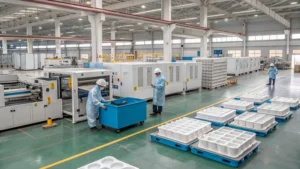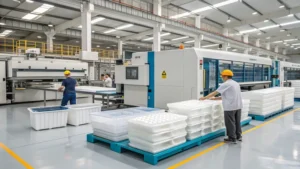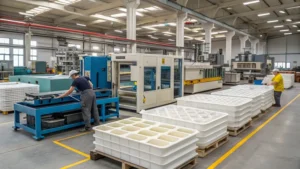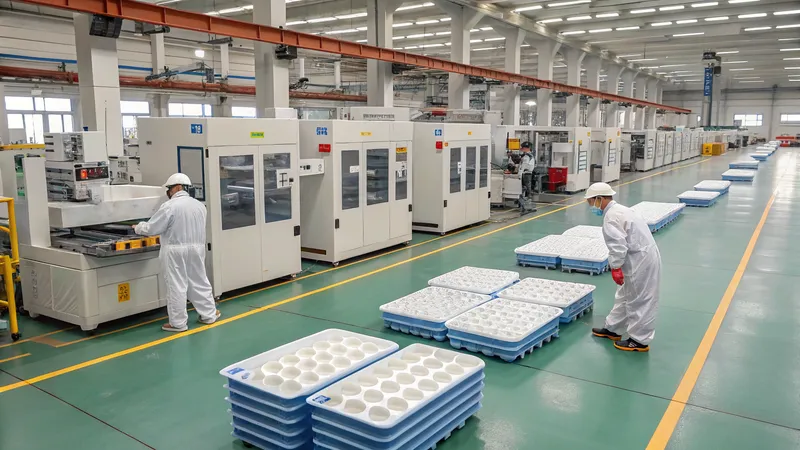
Vacuum forming is a versatile manufacturing process that transforms plastic sheets into a wide array of products by heating them, stretching them over molds, and shaping them with vacuum pressure. In Qatar, this technology supports key industries like packaging, automotive, and construction, offering cost-effective solutions for producing large, lightweight parts1. This blog post dives into the vacuum forming process, its applications, and highlights the top 5 plastic vacuum forming factories in Qatar2, providing you with the insights needed to choose the right partner for your manufacturing needs.
Vacuum forming heats plastic sheets, stretches them over molds, and uses vacuum pressure to shape them, ideal for packaging, automotive, and construction due to low tooling costs and versatility.
Whether you’re exploring vacuum forming3 for prototyping or production, understanding its technical details and local capabilities is essential. Let’s explore how this process works and where to find top-tier services in Qatar.
Vacuum forming is ideal for high-volume production.False
Vacuum forming excels in low to medium production volumes (100–10,000 parts) due to its lower tooling costs and faster setup compared to processes like injection molding.
Material selection significantly impacts the vacuum forming process.True
Different materials require specific heating temperatures, cooling times, and vacuum pressures, influencing the final product’s quality and performance.
- 1. What is Vacuum Forming?
- 2. What are the Typical Applications of Vacuum Forming?
- 3. What is the Vacuum Forming Process Workflow?
- 4. What are the Key Design Considerations for Vacuum Forming?
- 5. What are the Related Technologies to Vacuum Forming?
- 6. Top 5 Plastic Vacuum Forming Factories in Qatar
- 7. Conclusion
What is Vacuum Forming?
Vacuum forming, often referred to as thermoforming, involves heating a thermoplastic sheet until it becomes pliable (typically between 150°C and 250°C), stretching it over a mold, and applying vacuum pressure to pull the plastic tightly against the mold’s surface. Once cooled, the part solidifies and is trimmed for use. This process is prized for its simplicity and ability to produce large parts quickly.
Common aliases include vacuum pressure forming and vacuum molding. It’s a subset of thermoforming4, alongside techniques like pressure forming and twin-sheet forming.

Classification of Vacuum Forming
-
By Process:
- Vacuum Forming: Shapes plastic using vacuum pressure alone.
- Pressure Forming: Adds air pressure for sharper details.
- Twin-Sheet Forming: Bonds two sheets for hollow structures.
-
By Material:
- PVC (Polyvinyl Chloride)5: Affordable and formable, perfect for blister packs.
- PET (Polyethylene Terephthalate): Clear and strong, ideal for food packaging.
- ABS (Acrylonitrile Butadiene Styrene): Tough and durable, used in automotive parts.
-
By Application:
- Packaging: Trays, clamshells, blister packs.
- Automotive: Dashboards, interior trim.
- Industrial: Signage, protective covers.
What are the Typical Applications of Vacuum Forming?
Vacuum forming shines in scenarios requiring large, cost-effective parts with moderate complexity. Here are its key applications:
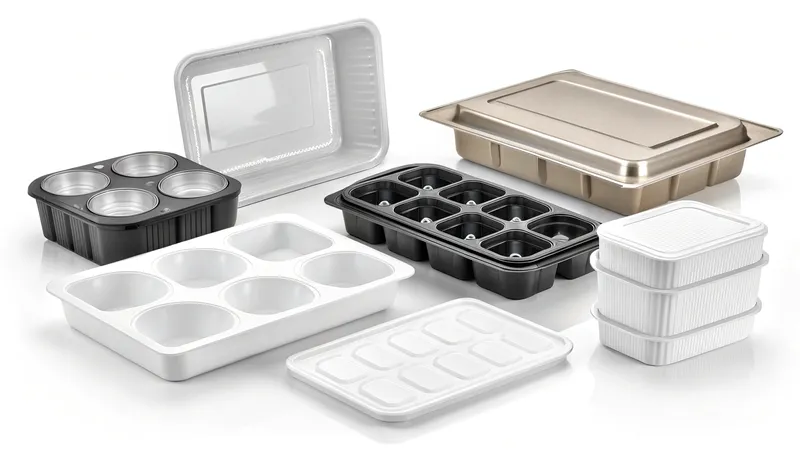
-
Packaging: Blister packs for electronics, clamshells for retail goods, and trays for food.
-
Automotive: Interior components like dashboards and door panels.
-
Medical: Trays for surgical tools and device packaging.
-
Consumer Goods: Toys, storage containers, and household items.
-
Industrial: Signage, displays, and machinery covers.
These applications leverage vacuum forming’s ability to balance cost, speed, and versatility.
Pros and Cons Compared to Other Technologies
Here’s how vacuum forming stacks up against injection molding and blow molding:
| Technology | Pros | Cons |
|---|---|---|
| Vacuum Forming | Low tooling costs, quick setup, large parts | Limited detail, lower strength |
| Injection Molding6 | High precision, strong parts, high volumes | Expensive molds, longer lead times |
| Blow Molding7 | Great for hollow parts, cost-effective | Restricted to hollow shapes, less detail |
Key Takeaway: Vacuum forming is best for low to medium runs and large parts, while injection molding suits high-volume, detailed production.
Vacuum forming offers the highest precision among plastic forming methods.False
It provides moderate detail but lacks the precision of injection molding for intricate parts.
Vacuum forming reduces prototyping costs.True
Its simpler, cheaper molds make it ideal for testing designs before scaling up.
What is the Vacuum Forming Process Workflow?
The vacuum forming process is straightforward yet precise, involving these steps:

-
Heating: A plastic sheet is heated to 150°C–250°C using ovens or infrared heaters for uniform pliability.
-
Forming: The sheet is stretched over a mold, and vacuum pressure (28–29 inches of mercury) shapes it.
-
Cooling: The part cools on the mold, often with air or water, to set its shape.
-
Trimming: Excess material is cut away using tools like CNC routers.
-
Finishing: Optional steps like printing or assembly enhance the final product.
Material Compatibility
- PVC: Cost-effective, great for packaging, but less heat-resistant.

-
PET: High clarity for food-safe applications, slightly pricier.
-
ABS: Strong and impact-resistant, perfect for automotive use.
Material choice dictates heating times, vacuum pressure, and part properties like strength and transparency.
All plastics can be vacuum formed.False
Only thermoplastics that soften when heated are suitable; thermosetting plastics cannot be reshaped.
Cooling time affects part quality.True
Proper cooling ensures dimensional stability and prevents warping.
What are the Key Design Considerations for Vacuum Forming?
Designing for vacuum forming requires attention to these factors:
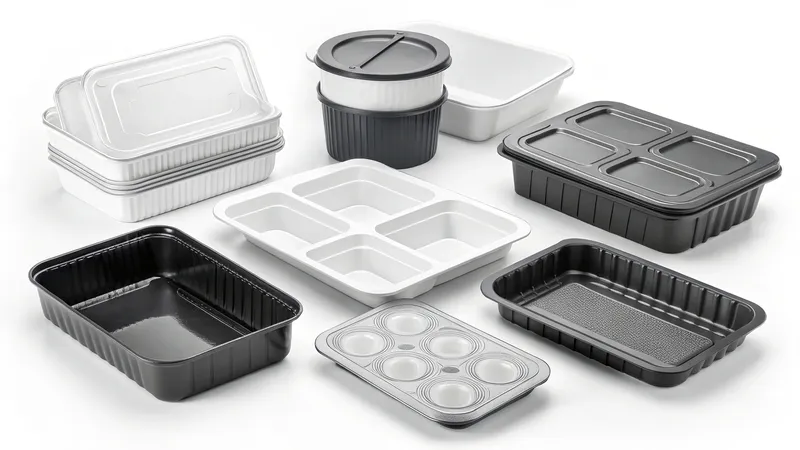
-
Part Geometry: Best for shallow parts; deep draws need support to avoid thinning.
-
Draft Angles: 2°–5° angles ease mold release.
-
Undercuts: Avoid unless using secondary tools, as they complicate demolding.
-
Material Selection: Match material to application needs (e.g., clarity, strength).
-
Trimming: Plan for excess material to be removed post-forming.
Process Selection Framework
-
Volume: 100–10,000 parts (low to medium).
-
Size: Up to several meters (large parts).
-
Complexity: Simple to moderate shapes.
-
Cost: Low tooling costs for small runs.
Decision Tree:
-
Low to medium volume + large parts → Vacuum forming.
-
High detail or strength → Injection molding.
-
Hollow parts → Blow molding.
What are the Related Technologies to Vacuum Forming?
Vacuum forming fits into a broader ecosystem of plastic manufacturing:

-
Injection Molding: High-volume, detailed parts (e.g., electronics casings).
-
Blow Molding: Hollow items like bottles.
-
Rotational Molding: Large hollow structures like tanks.
-
Extrusion: Continuous sheets or profiles, often supplying vacuum forming materials.
These methods complement vacuum forming, offering alternatives based on project needs.
Top 5 Plastic Vacuum Forming Factories in Qatar
While Qatar’s vacuum forming industry isn’t extensively documented, several leading plastic manufacturers likely provide these services. Here are the top 5:
| Factory Name | Services Offered | Contact Info |
|---|---|---|
| Premier Plastic Factory | Thermoforming, packaging | Website |
| Nask Plastic Factory | Custom fabrication | Website |
| Qatar Plastic Products Co. | Flexible packaging | Website |
| Doha Plastic Company | Recycling, manufacturing | Website |
| Al Amoudi Plastic Factory | Polyethylene products | Website |
- Premier Plastic Factory
- Location: New Industrial Area, Doha.
- Services: Thermoforming for PP, PET, and PS products like trays and cups.
- Capacity: 15,000 MT annually.
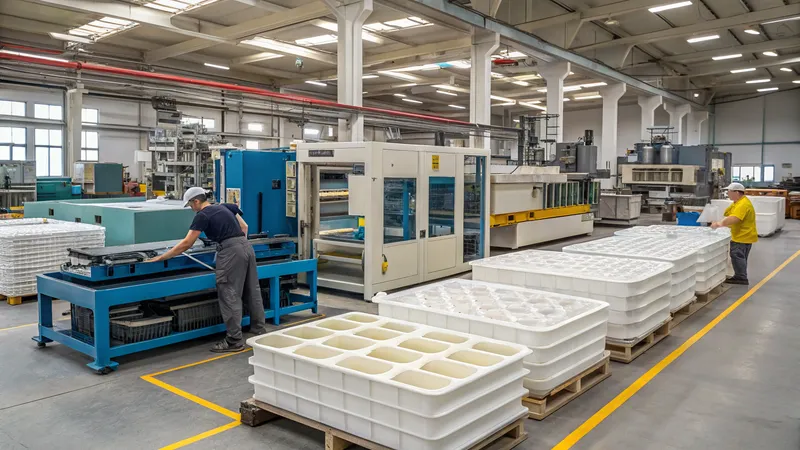
-
Nask Plastic Factory
- Location: Qatar.
- Services: Waste bins, pallets, and likely custom vacuum forming.
- Capacity: 10,000 m² facility.
-
Qatar Plastic Products Co.
- Location: Doha.
- Services: Flexible packaging, possibly including vacuum forming.
- Capacity: Established in 2000, focuses on local markets.
-
Doha Plastic Company
- Location: Small & Medium Industrial Area, Doha.
- Services: Recycling and manufacturing, potential for custom forming.
- Capacity: 50,000 MT annually.
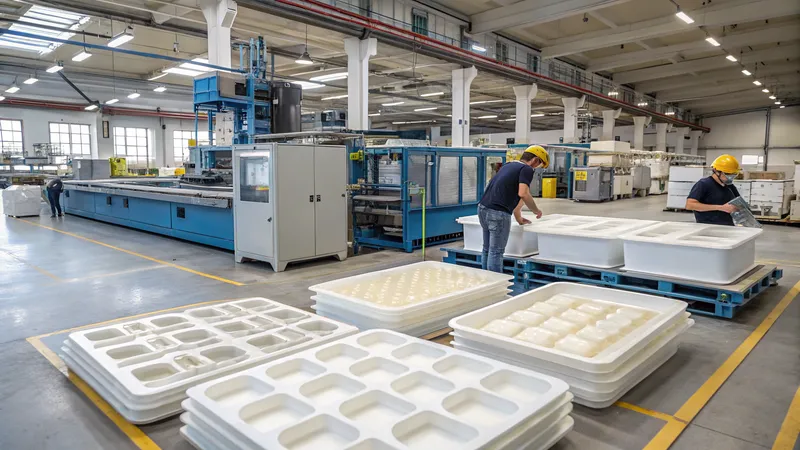
- Al Amoudi Plastic Factory
- Location: New Industrial Area, Doha.
- Services: Polyethylene sheets and bags, likely offering related services.
- Capacity: 7,000 tons per year.
Note: Premier Plastic Factory explicitly offers thermoforming. For others, contact them directly to confirm vacuum forming capabilities.
Conclusion
Vacuum forming is a cornerstone of Qatar’s plastic manufacturing landscape, delivering affordable, versatile solutions for industries like packaging and automotive. By grasping its process, applications, and design nuances, you can harness its benefits effectively. For tailored solutions, connect with Qatar’s top factories—starting with Premier Plastic Factory—to bring your projects to life.
-
Learn about innovative solutions that can enhance your manufacturing efficiency and reduce costs. ↩
-
Discover the leading factories in Qatar for plastic vacuum forming to make informed decisions for your manufacturing needs. ↩
-
Explore this link to gain a deeper understanding of vacuum forming, its benefits, and its applications in various industries. ↩
-
Learn about various thermoforming techniques, including vacuum forming, and their unique benefits in production. ↩
-
Discover the versatility of PVC in manufacturing and its applications in products like blister packs. ↩
-
This resource will provide insights into Injection Molding, highlighting its precision and strength, essential for high-volume production. ↩
-
Discover the advantages and limitations of Blow Molding, especially for hollow parts, to see if it fits your manufacturing needs. ↩



